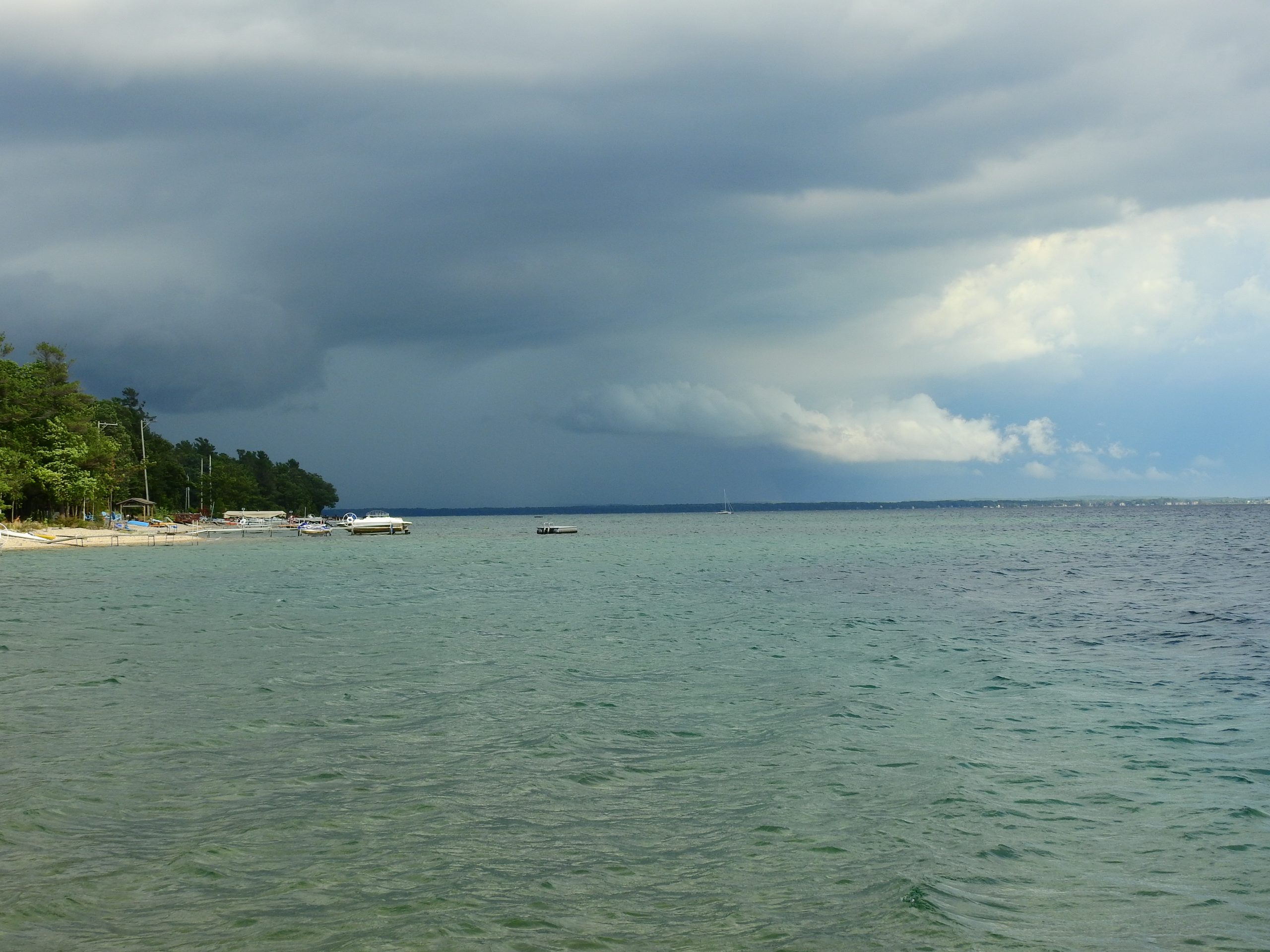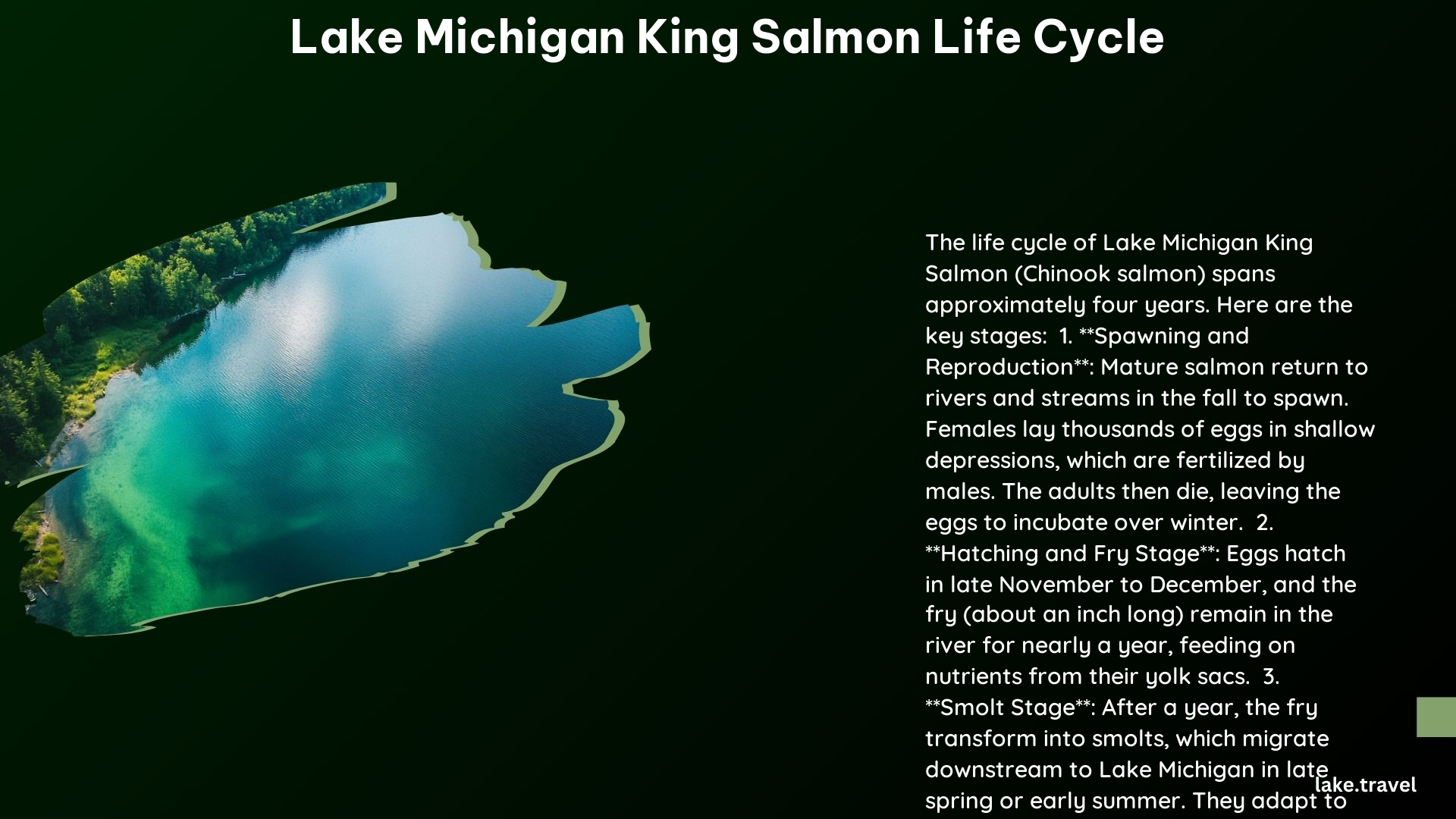The life cycle of King Salmon in Lake Michigan is a remarkable and intricate process that has captivated anglers and nature enthusiasts alike. From their spawning in the rivers to their growth and maturation in the open waters of the lake, these magnificent fish undergo a remarkable transformation that is crucial to the ecosystem and the local economy.
Spawning and Reproduction

The King Salmon’s life cycle begins in the fall, typically around late August to early September, when mature fish embark on their journey up the rivers and streams that feed into Lake Michigan. This is the spawning season, and the fish engage in a delicate courtship ritual as they compete for the right to fertilize the females’ eggs.
The females lay their eggs in shallow depressions in the riverbed, known as redds, and the males fertilize them. The females then cover the eggs with gravel to protect them from predators. This process is crucial for the continuation of the species, as the eggs will hatch in the winter and the fry (tiny fish) will incubate until early spring.
Early Life Stages

Once the eggs hatch, the fry, about an inch long, are completely dependent on the nutrients in their yolk sacs for survival. They spend the first few weeks hiding in the gravel, avoiding predators, and slowly growing stronger. As they develop, the fry transform into Parr, the first stage of a “fish-looking” creature. Parr live and feed in the river during the spring.
Migration and Feeding
In early summer, the Parr transform into smolts, which migrate downstream to Lake Michigan. During this transition, the smolts adapt to their new open water environment, gradually adjusting to different types of food available. Once in the lake, the King Salmon feed aggressively on a variety of prey, including alewives, herring, smelt, and other small fish. Over the next few years, they grow larger and stronger, reaching impressive sizes.
Maturation and Return to Spawn
King Salmon typically reach maturity and begin their journey back up the rivers to spawn once they hit three years of age, but some may spawn at two or four years. This return to the rivers is a massive physiological change, as the fish’s sole purpose is to spawn and continue the cycle.
Adaptation to Open Water
After migrating from the rivers, King Salmon adapt to their new open water environment in Lake Michigan. They gradually adjust to different types of food available and grow larger and stronger over time. Typical King Salmon can grow up to 30+ pounds in just four years, with an average weight of around 18-25 pounds.
Stocking and Management
The Department of Natural Resources has implemented a Salmon stocking program to control the Alewife population and to provide a new sport fishery. This program has a significant impact on the total population, with most King Salmon in Lake Michigan being stocked. While natural reproduction does occur, the stocking program has a bigger and more controlled impact on the total population.
Economic Importance
King Salmon are important to Michigan’s economy, with people coming from all over the world to fish for them. The sport fishery supports local businesses and communities, making the life cycle of these magnificent fish crucial to the region’s economic well-being.
In conclusion, the life cycle of King Salmon in Lake Michigan is a captivating and complex process that is essential to the ecosystem and the local economy. From their spawning in the rivers to their growth and maturation in the lake, these fish undergo a remarkable transformation that has captured the imagination of anglers and nature enthusiasts alike.
Reference:
– Michigan Department of Natural Resources – King Salmon
– Great Lakes Fishery Commission – King Salmon
– University of Michigan – King Salmon Life Cycle
